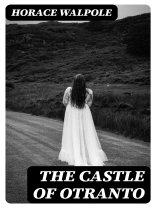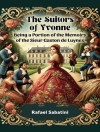In his pioneering Gothic novel, ‘The Castle of Otranto, ‘ Horace Walpole intricately weaves a tale imbued with elements of the supernatural and the macabre. Set against a backdrop of medieval architecture and mysterious castles, the narrative follows the tragic events surrounding the titular castle, where family secrets and ominous prophecies intertwine. Walpole’s stylistic choices reflect the early 18th-century fascination with romanticism, blending poetic prose with a somber atmosphere. The novel serves as a precursor to the Gothic genre, flirting with themes of terror, romantic despair, and the uncanny, while employing a narrative technique that invokes suspense through both action and the characters’ psychological turmoil. Horace Walpole, an English writer, art historian, and politician, drew heavily on his own experiences and historical interests to craft ‘The Castle of Otranto.’ His upbringing in a politically active family and his extensive engagement with art and literature cultivated an environment ripe for creative expression. As a patron of the arts and an aficionado of antiquities, Walpole was profoundly influenced by the ideas of his time, leading him to explore the intersection of history, fiction, and human emotion in his writing. This essential read is highly recommended for those interested in the foundations of the Gothic tradition and the exploration of human psychology within the confines of literature. Walpole’s engaging narrative style, combined with his innovative approach to storytelling, makes ‘The Castle of Otranto’ a captivating experience that continues to influence writers and enthrall readers.
Over de auteur
Horace Walpole (1717–1797), an English writer, art historian, man of letters, and politician, is considered a central figure in the early development of the Gothic novel. Born into a prominent political family as the son of Sir Robert Walpole, the first Prime Minister of Great Britain, Walpole was educated at Eton and King’s College, Cambridge. His most famous work, ‘The Castle of Otranto’ (1764), is widely regarded as the first Gothic novel, establishing many of the genre’s themes and conventions, such as the emphasis on atmosphere, the supernatural, and medievalism. Walpole’s novel engendered a new fascination with the medieval past, the mysterious, and the horrific in literature. He introduced the trope of a haunted castle and a melodramatic narrative full of terror and eeriness, influencing a myriad of writers such as Mary Shelley and Ann Radcliffe. Beyond his fiction, Walpole’s letters are highly esteemed for their wit, observation, and commentary on the Aesthetic and cultural currents of his day. His literary style combines nuanced humor with a distinctively ornate Gothic sensibility, marking him as a pioneer and a cultivated participant in eighteenth-century literary life. Walpole also indulged in politics, following in his father’s footsteps, yet it is his literary contributions, particularly the seminal ‘The Castle of Otranto, ‘ that endures as his most significant legacy.












